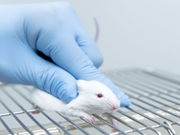Hypothalamic ventromedial Lin28a enhances glucose metabolism in diet-induced obesity in mice
MONDAY, June 5, 2017 (HealthDay News) — An experimental study supports a TANK-binding kinase 1 (TBK-1)-dependent role for Lin28a in the hypothalamic ventromedial nucleus in glucose homeostasis. The study was published online May 26 in Diabetes.
Jung Dae Kim, Ph.D., from the Yale University School of Medicine in New Haven, Conn., and colleagues examined the central function of the Lin28a/Let-7 axis. Noting that Lin28a is highly expressed in the hypothalamus and that its expression is associated with positive energy balance, the authors targeted the hypothalamic ventromedial nucleus (VMH) to selectively overexpress (Lin28aKIVMH) or downregulate (Lin28aKDVMH) Lin28a expression in mice.
The researchers found that body weight and glucose homeostasis were not affected in Lin28aKIVMH or Lin28aKDVMH mice on a standard chow diet. No differences in body weight and composition were observed on high-fat diet, although compared with their controls, Lin28aKIVMH mice showed improved glucose tolerance and insulin sensitivity. In contrast, glucose intolerance and insulin resistance were seen in Lin28aKDVMH. There were no associations seen for changes in VMH AKT (protein kinase B) activation of diet-induced obese Lin28aKIVMH or Lin28aKDVMH mice and alterations in Let-7 levels or insulin receptor activation. Expression of TBK-1, which was a direct Lin28a target mRNA, was altered. In diet-induced obese mice, VMH-specific inhibition of TBK-1 impaired glucose metabolism and AKT activation.
“Altogether, our data show a TBK-1- dependent role for central Lin28a in glucose homeostasis,” the authors write. “This pathway may represent a mechanism that functions to alter peripheral insulin sensitivity in response to changes in circulating glucose levels.”
Copyright © 2017 HealthDay. All rights reserved.








